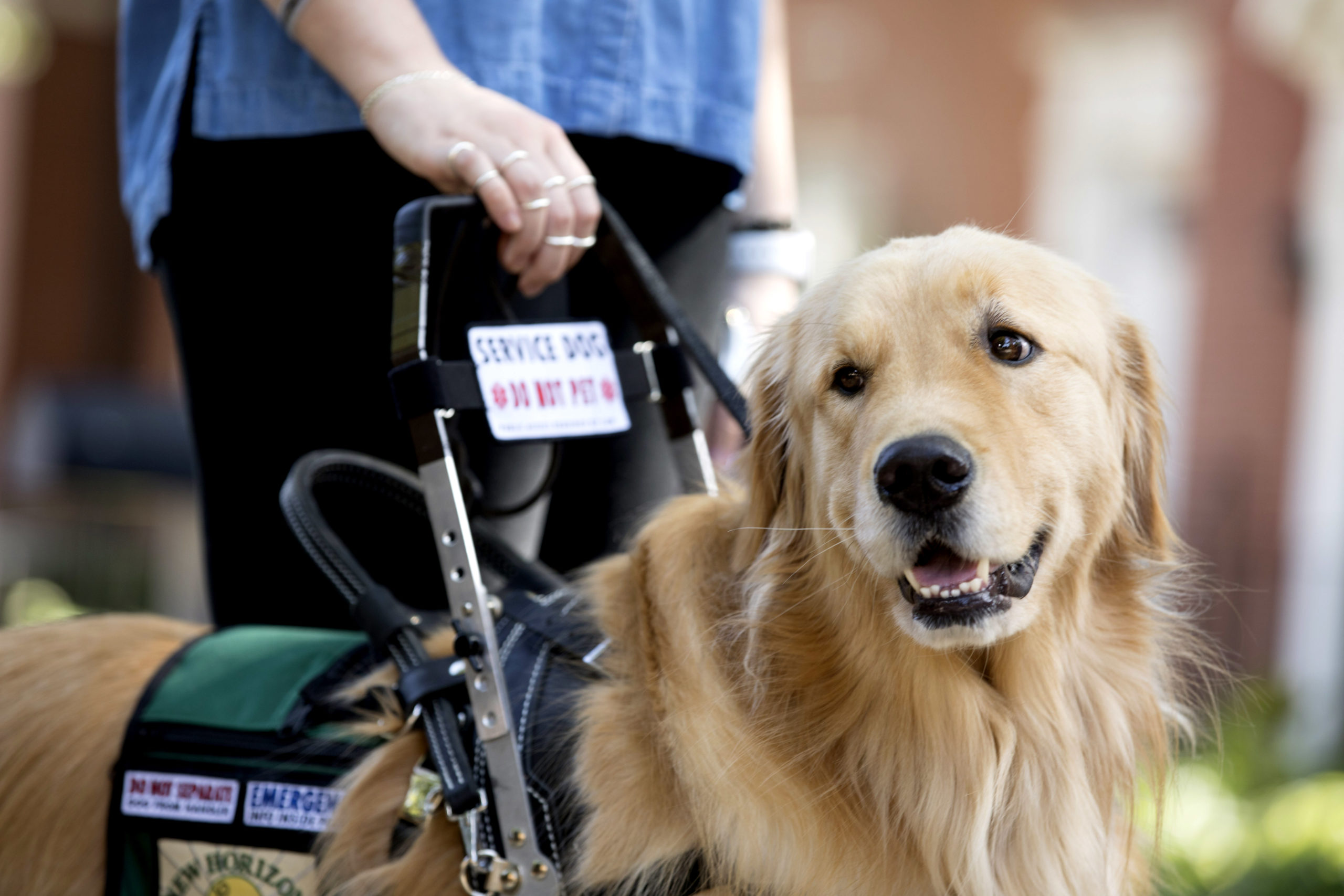By: Rachael Andrews
In her recent article for the Disability and Health Journal, Dr. Emily Zier (PhD, ‘19) investigates the inconsistencies between federal and state policies concerning service animals in the United States. Zier contends that the current policies are contradictory and burdensome to service animal handlers–people with disabilities–and rarely protect those service animal owners adequately.
There are many common misconceptions concerning service animals. For business owners, one misconception is that service animals need to be registered. In reality, there is no apparatus for registration, and no proof is required by the Americans with Disabilities Act (ADA). In fact, it is illegal for business owners and operators to ask for proof of service animal certification under the ADA.
For individuals, there is confusion about the difference between service animals and emotional support animals (ESAs). Under the ADA, service animals are described as specifically dogs and must be trained to perform a certain task to mitigate their handler’s disability. Thus, people with disabilities may need these service animals around them at all hours of the day in order to live independently.
Under federal policy, ESAs are not considered service animals because they are not trained to perform a task to mitigate someone’s disability, but rather they provide emotional support with their presence. ESAs are recognized under the Fair Housing Act and the Air Carrier Access Act, meaning that they are allowed in living spaces and airplanes without restrictions.
Both service animals and ESAs are required because of a disability, but the similarities end there.
“According to the ADA, you still need to be diagnosed with a disability to qualify for an ESA,” Zier says. “However, with fraudulent online certifications, it is easy for people to take advantage of the unregulated system and purchase misleading certification for an ESA, without ever physically seeing a doctor.”
It is also important to note that many disabilities are invisible, so it can be difficult to recognize if someone legitimately requires an ESA.
There are many inconsistencies with federal and state policies. “Mostly, definitions of service animal differ from state to state–there are a total of 22 differenmt titles used– and there are still 19 states that do not address misrepresentation of a service dog,” Zier explains.
For example, some states expand the definition of service animals and allow them to be anything from a monkey to a snake, whereas some require service animals to strictly be limited to dogs. Despite these inconsistencies, Zier says that, “People with disabilities need to be able to travel with the same ease as others, and their rights need to be cohesive across state lines.”
“This is an exceptionally vulnerable population and their cognitive abilities may or may not be limited based on their disability, which may pose even more challenges to understanding variations across policies,” Zier goes on. “Even if their cognitive abilities are not limited, It is not acceptable to require service animal handlers to research multiple policies in order to simply exercise their right to use a service animal so that they may live their lives independently.”
Inconsistencies across states need to be reconciled so that people with disabilities do not continue to encounter barriers to access and to protect legitimate service dog handlers from fake service dogs. Inconsistencies across federal policies are also an issue, and may put businesses and individuals in an impossible position. For example, according to the ADA, service animals are limited to dogs and ESAs are not considered to be service dogs and therefore do not have public access rights. However, under the Air Carrier Access Act, ESAs, which can be any kind of animal, have the same right to travel on planes as service dogs. “Businesses start to become confused about what is and is not a service animal, and often do not know their rights at that point. Some even begin to deny access to service animals when, legally, they cannot,” Zier says.
“The best way for legislators to mitigate the confusion is to crack down on fake service dogs, and define service animals across all policies based on how the ADA defines them, as separate from ESAs and as dogs only,” Zier explains.
Zier would like future research to address how these inconsistencies among policies might affect service dog handlers, and how to improve policies so that it is more difficult to misrepresent a pet as a service dog and to ensure legitimate handlers do not encounter barriers to public access with their service dogs.
“I’d also like this type of research to bring awareness to these issues,” Zier continues. “Many politicians and legislators do not even realize that their state’s policies are contradicting the ADA.”
“Many people with service dogs struggle with barriers to access but their representatives do not realize that unless there are advocates that bring attention to the issue,” Zier concludes. “It’s an easy fix, but people have to first know that it is an issue that exists in the first place.”






